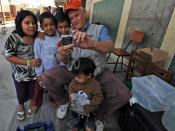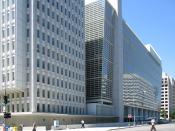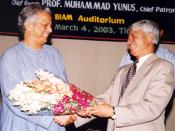It is not difficult to measure why the simplest form of financial service can make a significant difference to a poor family. Lacking these instruments, they remain trapped in a cycle of low financial returns and low incomes. With The supports of World Bank, the implement MFIs could become a positive force for alleviation of poverty.
There is a need for alternative financial institutions. Many of the world's poor are farmers, shopkeepers, farmers, small commodity producers, Like other businesspeople, they require access to simple instruments for obtaining working capital, or expanding businesses. Nongovernmental organizations--These NGOs have different modes of operation, and program goals, and are not legally registered as banks, unlike formal financial intermediaries, such as nationalized commercial banks, that lend based on collateral and rationing credit, due to high administrative cost for small loans, high transaction cost, and the nature of risk. Therefore, the poor are excluded from access of credit.
NGOs are alternative financial institutions like these microfinance institutions (MFIs) provide services to solidarity credit to groups that poor community members create. With these services, they have improved women's access to credit and achieved positive social change as well. (Zeller 2001)
There are different views on potential impacts of micro-credit programs on poverty alleviation. Some people might argue that the level of extreme poverty has hardly changed over time in rural areas. For instance, widespread poverty and malnutrition continue to exist in Bangladesh In 1997, poverty alleviation remains controversial. Despite these controversies, I find that the micro credit programs have had a positive impact on household welfare in a number of ways. The quantity and quality of food consumed the health of household members, For example, MFIs provides credit to people in about a third of country, 65 percent of the borrowers are landless women and all...


